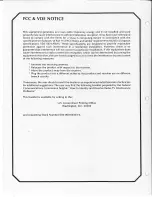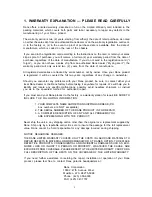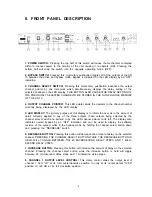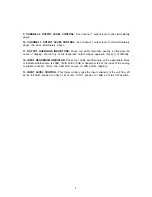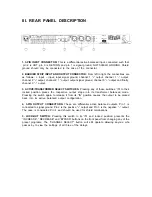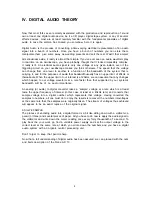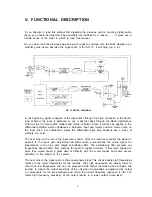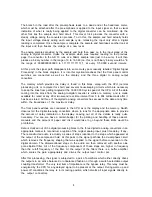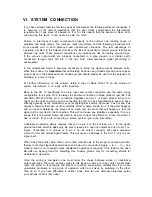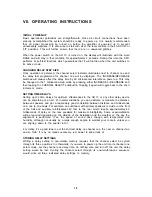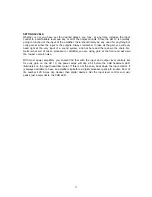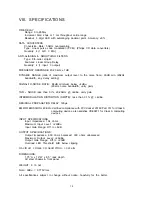
IV. DIGITAL AUDIO THEORY
A SILLY EXAMPLE.
Don’t forget to keep that pencil sharp.
6
Now that a full understanding of digital audio has been assured, we can proceed with the nuts
and bolts description of the Rane AD 13.
The process of encoding audio into a digital format is a bit like sitting down with a voltmeter, a
pencil (or three) and several pieces of paper. All you have to do now is apply the audio signal to
the voltmeter and write down the meter reading once every forty thousandth of a second. To
play back the your work, go find a variable power supply and set the output voltage to the
correct level at the same rate at which you wrote down the numbers and you have a digital
audio system with an organic central processing unit.
An analog (or audio) to digital converter takes a “sample” voltage at a rate which is at least
twice the upper frequency of interest (in this case at least at a 40kHz rate) and converts that
sample voltage into a digital number which represents that voltage. Having converted the
samples to numbers, all one must do to enjoy the results is reconvert the numbers intovoltages
at the same rate that the samples were originally taken. The stream of voltages thus achieved
will appear to be an exact replica of the original signal.
All seriousness aside, it really is almost that simple. If you’ve ever seen an audio waveform play
in real time on an oscilloscope, you have probably thought that it looked impossibly complex.
It really isn’t. An electrical audio signal is only one voltage at any given instant, even if the
triggering circuit on your oscilloscope makes you think otherwise. The speed that the voltage
can change from one level to another is a function of the bandwidth of the system that is
carrying it, and for the purposes of audio that bandwidth usually has an upper limit of 20kHz or
thereabouts. When the upper limit of our interest is at 20kHz, we can assume that any changes
which happen to our voltage waveform at a rate faster than that supported by our system’s
bandwidth will be of no audio importance.
Digital Audio is the process of converting a time-varying electrical representation of an audio
signal into a bunch of numbers. Once you have a bunch of numbers you can store them,
manipulate them, give some away as wedding presents and sell the rest. Wasn’t that simple?
Now that most folks even remotely associated with the production and reproduction of sound
own at least one digital audio device, be it a CD player, digital tape system, or any of several
effects devices, most are at least remotely familiar with the fundamental principles of digital
audio. In case the sermon has missed you somehow, here it is again.


